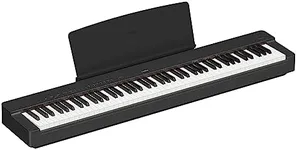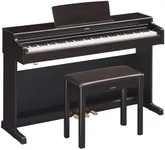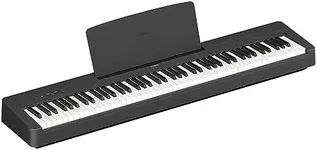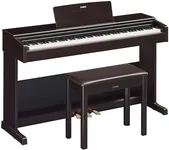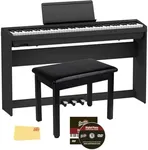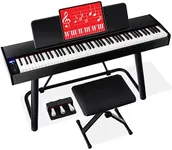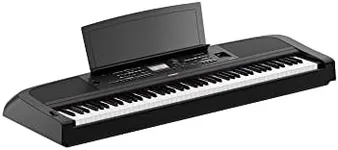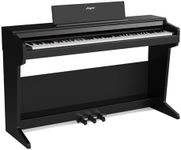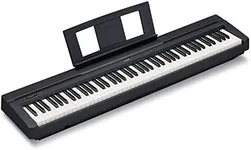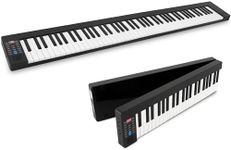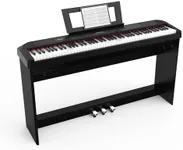Buying Guide for the Best Keyboards 88 Keys
Choosing the right 88-key keyboard can be a rewarding experience, especially if you know what to look for. Whether you're a beginner or an experienced pianist, the right keyboard can enhance your playing experience and help you achieve your musical goals. Here are some key specifications to consider when selecting an 88-key keyboard, along with explanations to help you make an informed decision.Key ActionKey action refers to how the keys feel when you press them. This is important because it affects your playing experience and can influence your technique. Key actions can be divided into three main types: weighted, semi-weighted, and unweighted. Weighted keys mimic the feel of an acoustic piano and are ideal for classical and serious piano players. Semi-weighted keys offer a balance between the feel of an acoustic piano and the lighter touch of a synthesizer, making them suitable for a variety of playing styles. Unweighted keys are light and easy to press, which can be good for beginners or those who play fast, electronic music. Choose the key action that best matches your playing style and goals.
Sound QualitySound quality is crucial because it determines how realistic and pleasing the keyboard sounds. This can be influenced by the number of built-in sounds, the quality of the samples, and the sound engine used. High-quality keyboards often use advanced sampling techniques to capture the nuances of real instruments. When evaluating sound quality, listen for clarity, richness, and how well the keyboard replicates the sound of an acoustic piano. If possible, try out different keyboards in person to see which one sounds best to you. Your choice should reflect the type of music you want to play and your personal preference for sound.
PolyphonyPolyphony refers to the number of notes a keyboard can produce at the same time. This is important for playing complex pieces of music that require multiple notes to be sustained simultaneously. Keyboards typically offer polyphony ranging from 32 to 256 notes. For beginners or those playing simpler pieces, 32 to 64 notes of polyphony may be sufficient. Intermediate players might prefer 128 notes, while advanced players and those using the keyboard for professional performances or recording should look for 192 or 256 notes of polyphony. Consider the complexity of the music you plan to play when choosing the right level of polyphony.
ConnectivityConnectivity options determine how you can use your keyboard with other devices and software. Common connectivity features include USB, MIDI, and audio outputs. USB and MIDI connections allow you to connect the keyboard to a computer or other digital devices for recording, composing, and using music software. Audio outputs let you connect to external speakers or amplifiers for better sound projection. Some keyboards also offer Bluetooth connectivity for wireless connections. Think about how you plan to use your keyboard and what devices you want to connect it to when considering connectivity options.
PortabilityPortability is an important factor if you plan to move your keyboard frequently or take it to gigs and rehearsals. This includes the weight and size of the keyboard, as well as whether it has a built-in power supply or requires an external adapter. Lightweight and compact keyboards are easier to transport but may sacrifice some features or sound quality. Heavier keyboards often offer better build quality and more features but can be cumbersome to move. Consider your lifestyle and how often you need to transport your keyboard when evaluating portability.
Additional FeaturesAdditional features can enhance your playing experience and provide more versatility. These might include built-in speakers, recording capabilities, learning tools, and various sound effects. Built-in speakers are convenient for practice and small performances, while recording capabilities allow you to capture your playing and create music. Learning tools, such as built-in lessons and metronomes, can be helpful for beginners. Sound effects and different instrument voices can add creativity to your playing. Think about which additional features are important to you and how they can support your musical journey.
